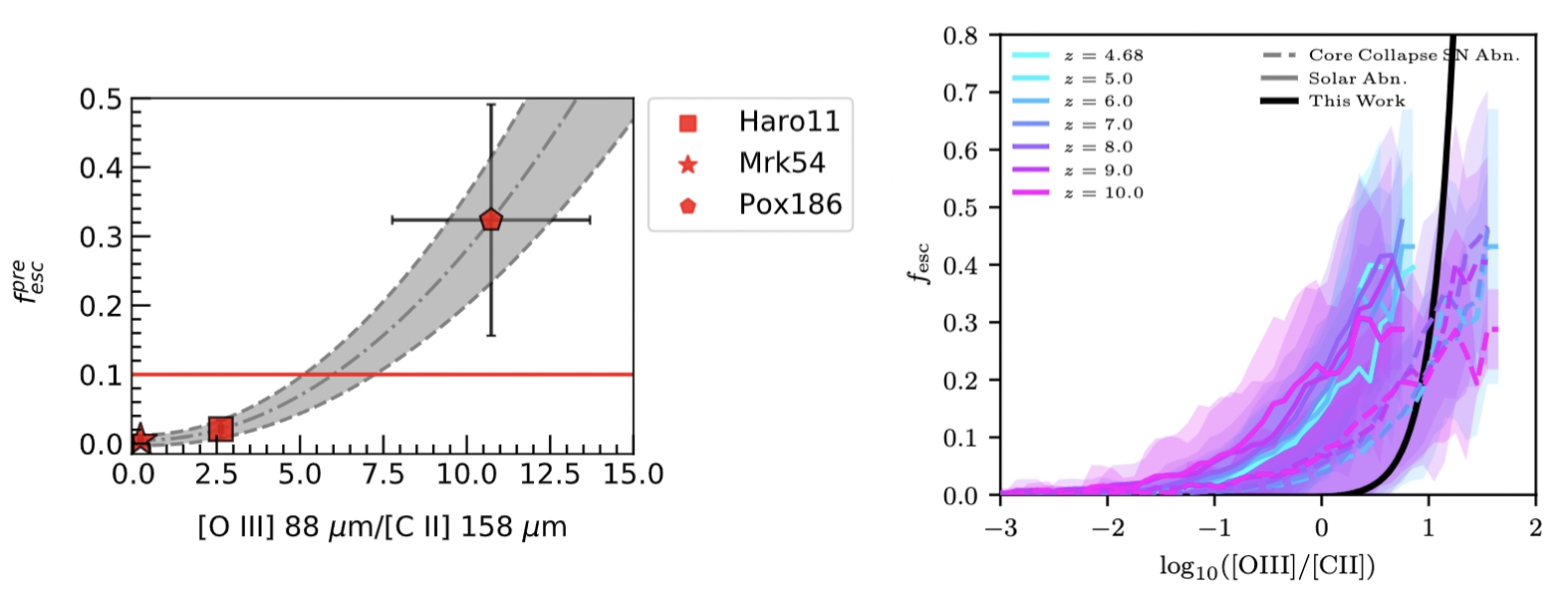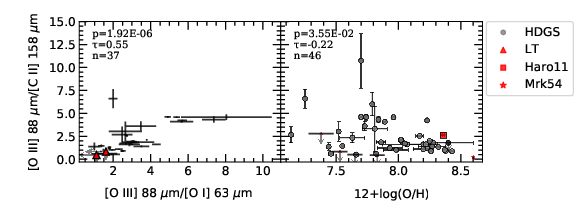Achievements & Publications
Detections of [C II] 158 μm and [O III] 88 μm in a Local Lyman Continuum Emitter, Mrk 54, and Its Implications to High-redshift ALMA Studies
Ura, Ryota, Hashimoto, Takuya, Inoue, Akio K., Fadda, Dario, Hayes, Matthew, Puschnig, Johannes, Zackrisson, Erik, Tamura, Yoichi, Matsuo, Hiroshi, Mawatari, Ken, Fudamoto, Yoshinobu, Hagimoto, Masato, Kuno, Nario, Sugahara, Yuma, Yamanaka, Satoshi, Bakx, Tom J.~L.~C., Nakazato, Yurina, Usui, Mitsutaka, Yajima, Hidenobu, & Yoshida, Naoki
Abstract
We present integral field, far-infrared (FIR) spectroscopy of Mrk 54, a local Lyman continuum emitter, obtained with FIFI-LS on the Stratospheric Observatory for Infrared Astronomy. This is only the second time, after Haro 11, that [C II] 158 μm and [O III] 88 μm spectroscopy of the known LCEs have been obtained. We find that Mrk 54 has a strong [C II] emission that accounts for ~ 1% of the total FIR luminosity, whereas it has only moderate [O III] emission, resulting in the low [O III]/[C II] luminosity ratio of 0.22 0.06. In order to investigate whether [O III]/[C II] is a useful tracer of f esc (LyC escape fraction), we examine the correlations of [O III]/[C II] and (i) the optical line ratio of O32 ≡ [O III] 5007 A/[O II] 3727 A, (ii) specific star formation rate, (iii) [O III] 88 μm/[O I] 63 μm ratio, (iv) gas-phase metallicity, and (v) dust temperature based on a combined sample of Mrk 54 and the literature data from the Herschel Dwarf Galaxy Survey and the LITTLE THINGS Survey. We find that galaxies with high [O III]/[C II] luminosity ratios could be the result of high ionization (traced by O32), bursty star formation, high ionized-to-neutral gas volume filling factors (traced by [O III] 88 μm/[O I] 63 μm), and low gas-phase metallicities, which is in agreement with theoretical predictions. We present an empirical relation between the [O III]/[C II] ratio and f esc based on the combination of the [O III]/[C II] and O32 correlation, and the known relation between O32 and f esc. The relation implies that high-redshift galaxies with high [O III]/[C II] ratios revealed by the Atacama Large Millimeter/submillimeter Array may have fesc ≳ 0.1, significantly contributing to the cosmic reionization. * Based on observations done with FIFI-LS on SOFIA.






 和 英
和 英